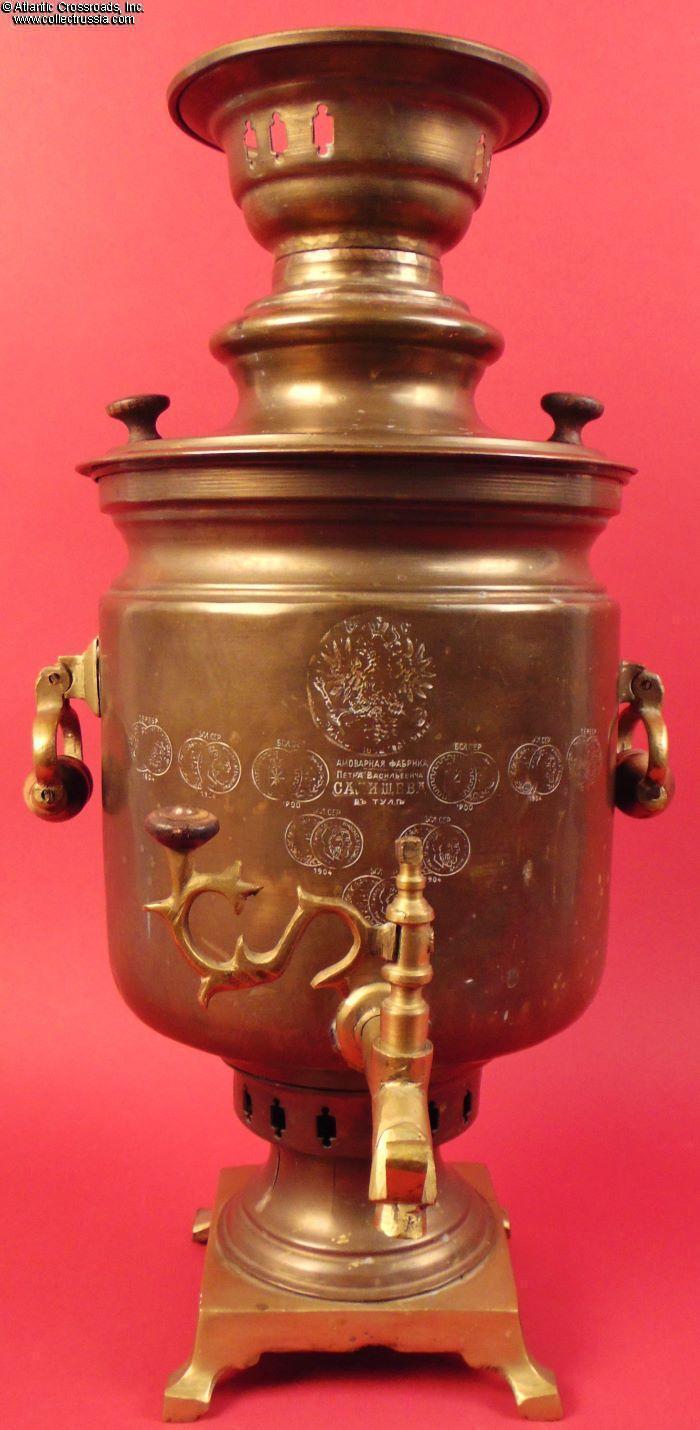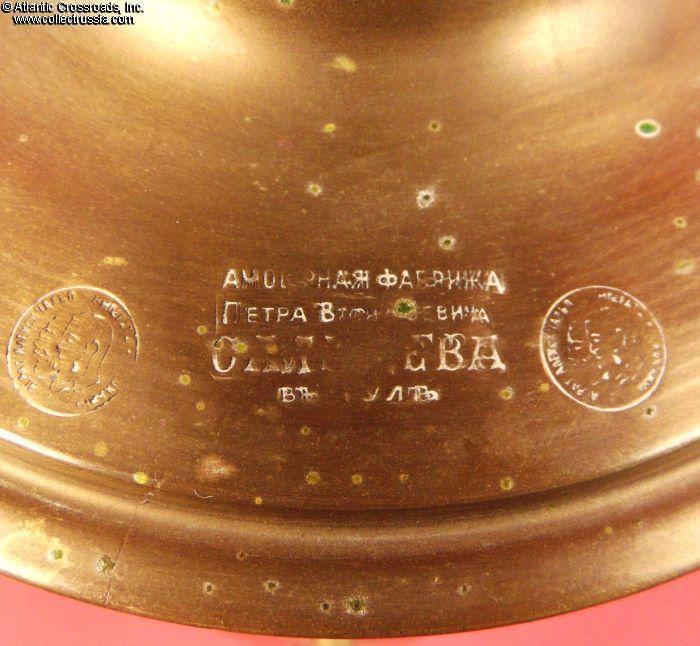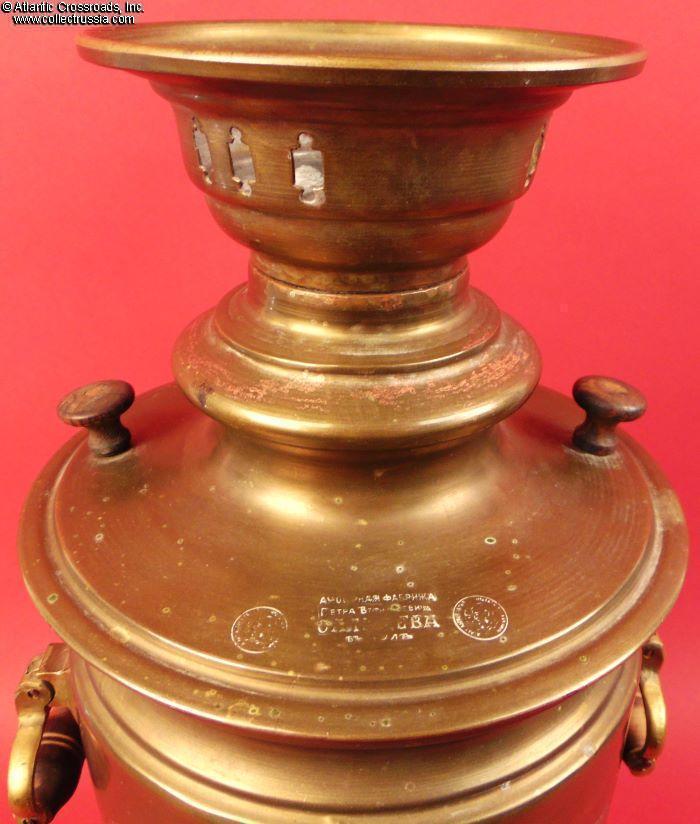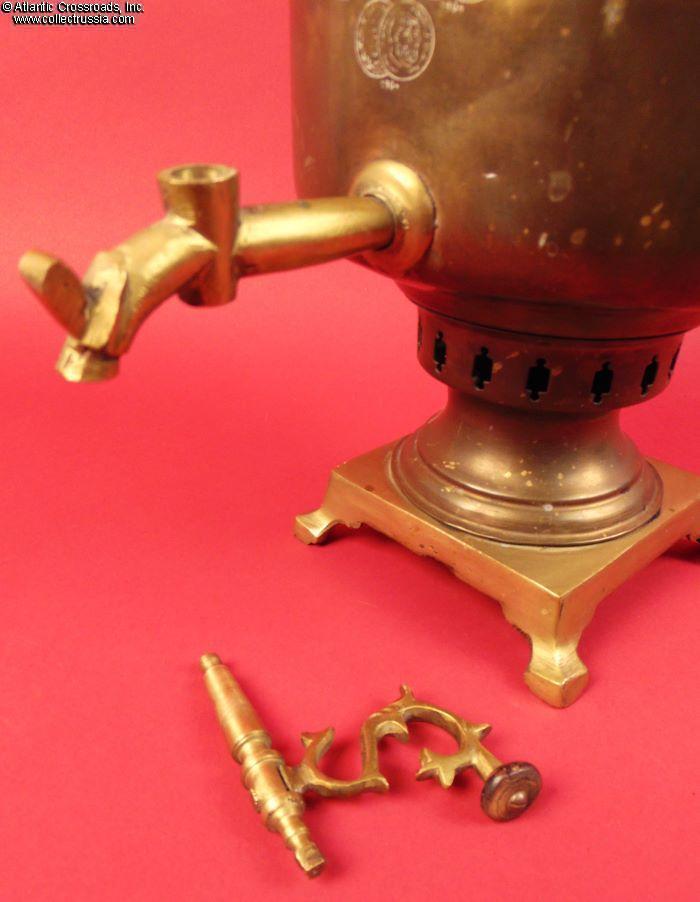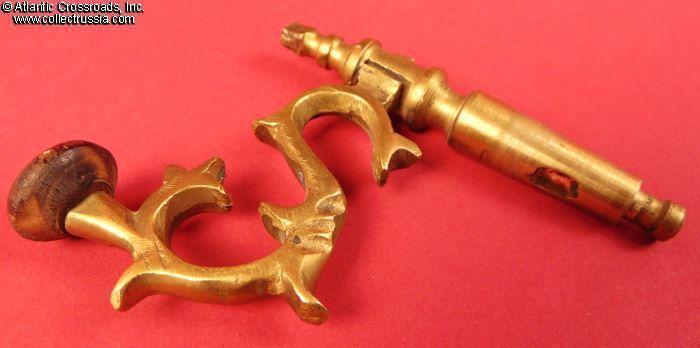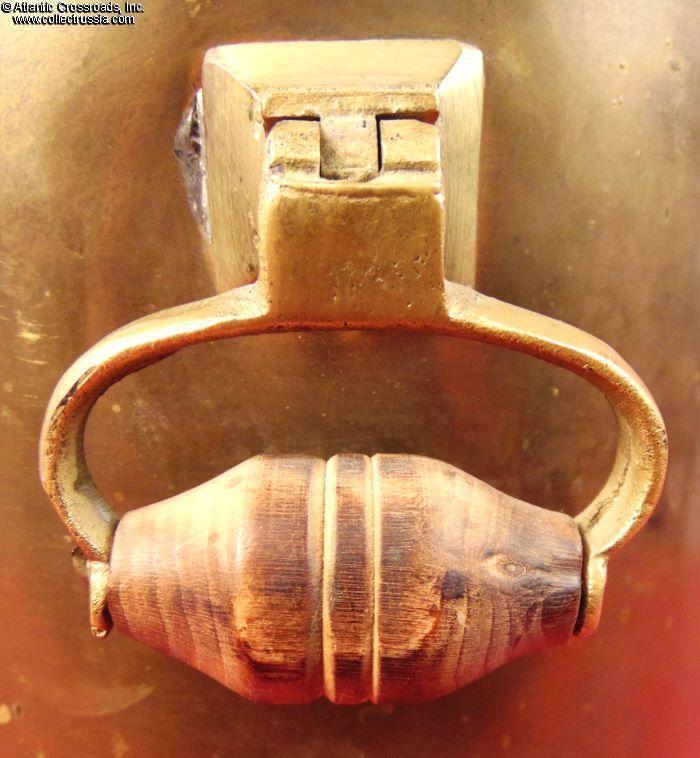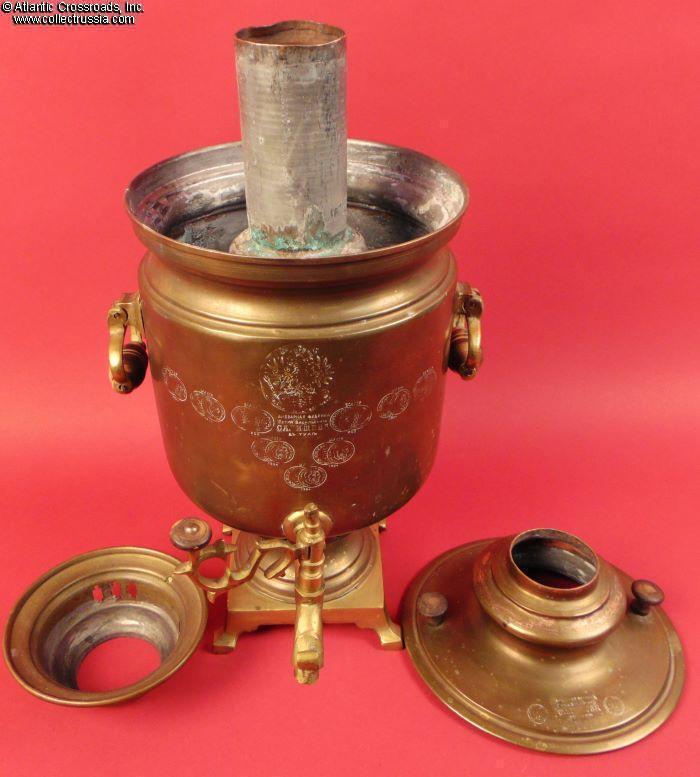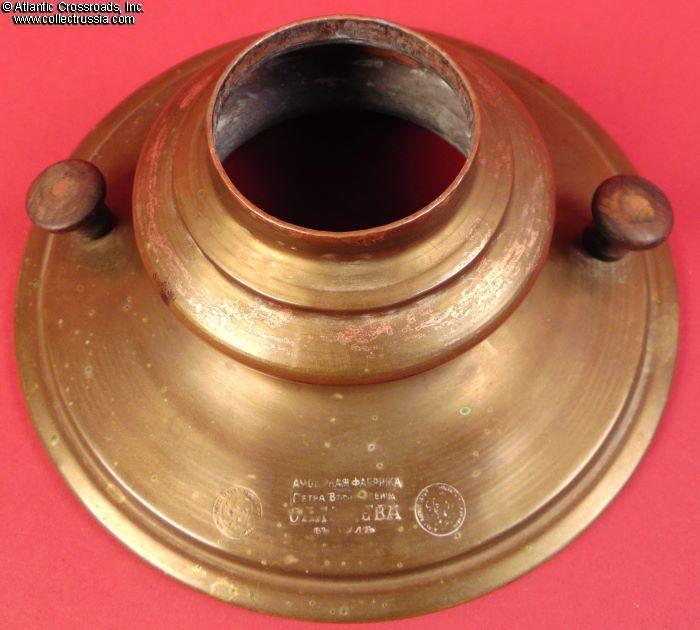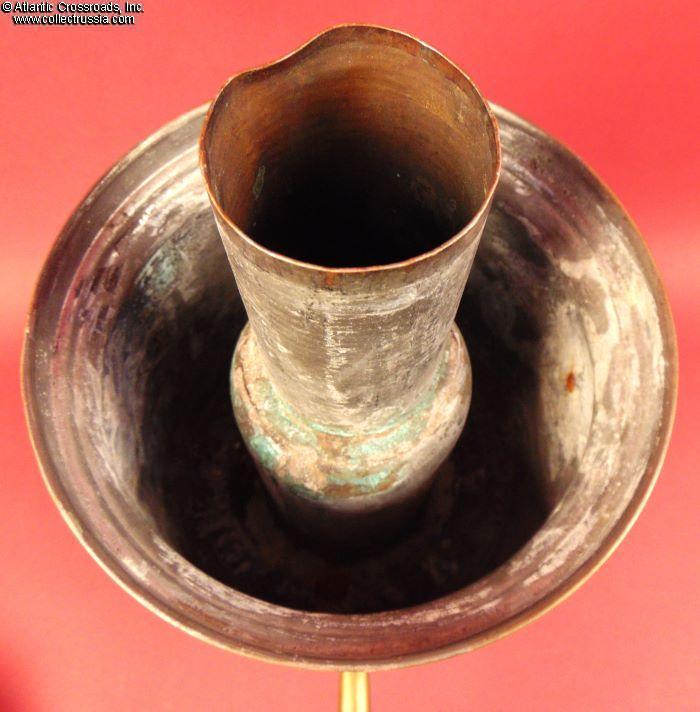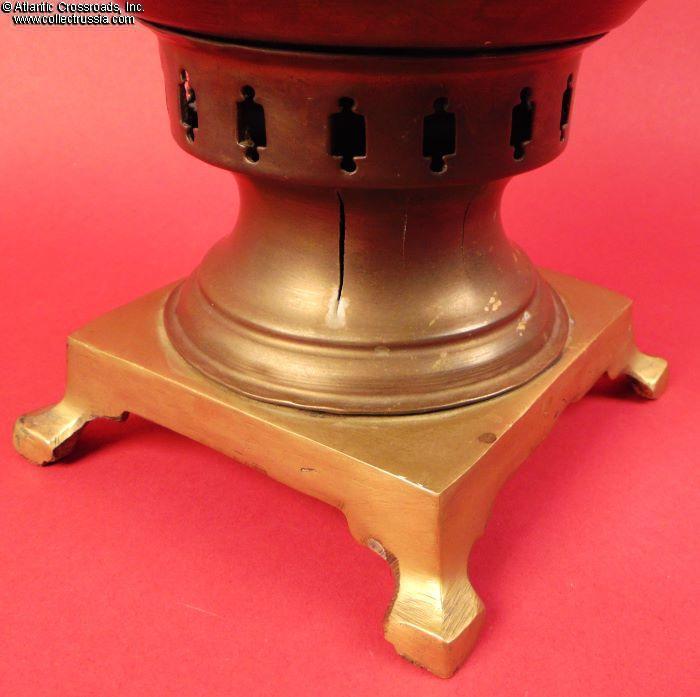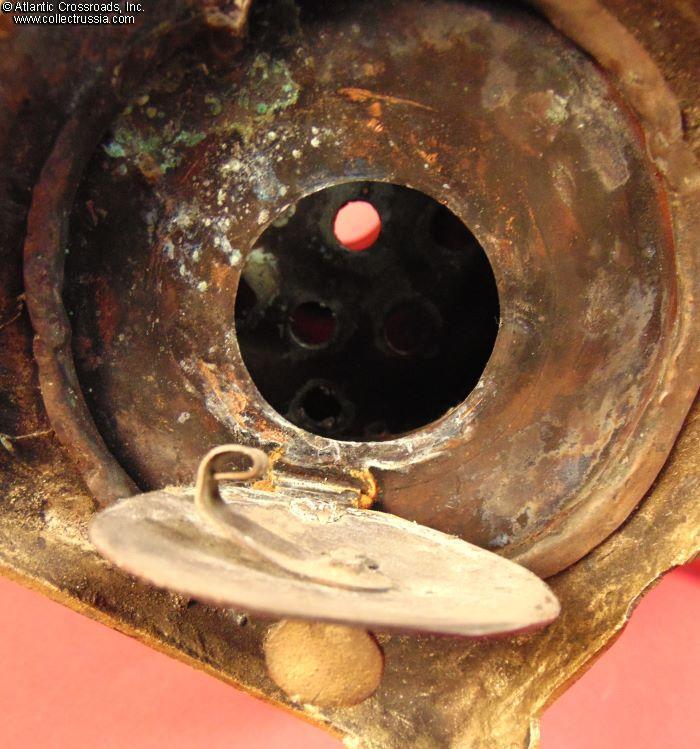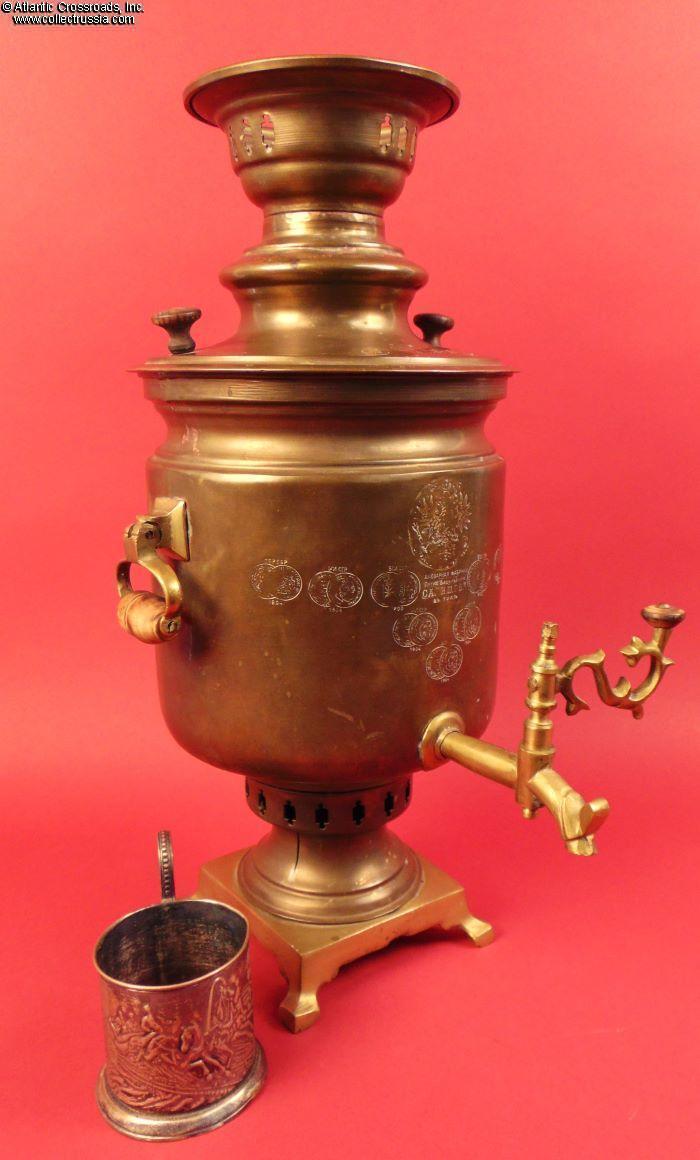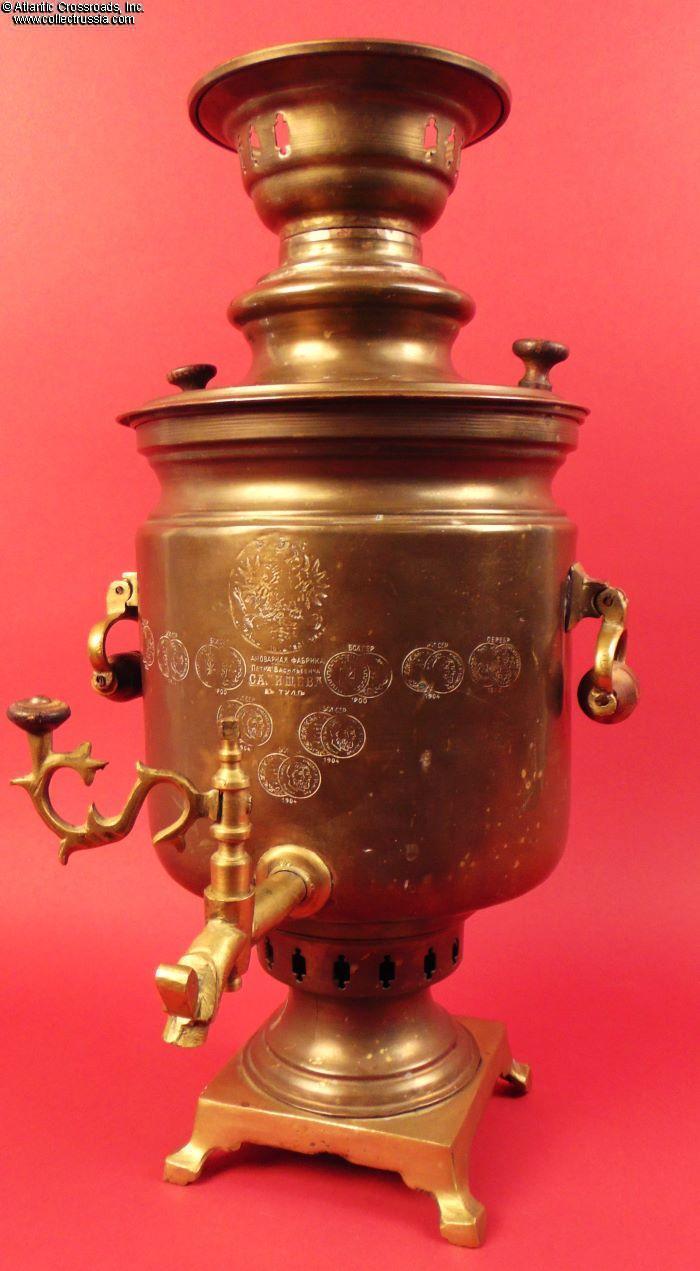
Brass samovar by Pyotr Salishchev, circa 1904 - 1915.
Stands approx. 18" tall to the top of the crown, the body is nearly 8" in diameter. Weighs a little over 6 lbs. Capacity is close to 1 US gallon. A samovar of this capacity and simplicity of design was probably meant for a middle-class family household. It is the same simplicity of form and harmony of form and function that makes it perhaps more attractive than over-decorated designs marketed for more affluent clientele.
The body features nine stamped images of the medals which Salishchev samovars had won at various domestic and international exhibitions by that time. The latest s
Stands approx. 18" tall to the top of the crown, the body is nearly 8" in diameter. Weighs a little over 6 lbs. Capacity is close to 1 US gallon. A samovar of this capacity and simplicity of design was probably meant for a middle-class family household. It is the same simplicity of form and harmony of form and function that makes it perhaps more attractive than over-decorated designs marketed for more affluent clientele.
The body features nine stamped images of the medals which Salishchev samovars had won at various domestic and international exhibitions by that time. The latest stamps are dated 1904, coincidentally the year of the beginning of the Russo-Japanese war. The abbreviations ЗОЛ, СЕР or БРОН above each medal stand for "gold", "silver" and "bronze", respectively, signifying the 1st, 2nd or 3rd place of the award. All the stamps on this samovar are marked CEP (silver). The trademark of Petr Salishchev's factory is stamped below the double-headed eagle, and also on the lid.
The crown achievement of any Russian Imperial samovar manufacturer was the awarded honor of putting the state emblem, the double-headed eagle, on their product. It always occupies the proud central position among the award stamps, right above the faucet.
A piquant detail about the double-headed eagle on this samovar was found in online materials posted by experts. Apparently, some manufacturers of less-than-stellar financial standing in the industry were not above embellishing the status of their enterprise by clandestinely stamping the double-headed eagle on their products. Taken usually from the reverse of some exhibition medal, they have the telltale frame imprinted around the eagle. A genuine double-headed eagle emblem has no frame around it.
The samovar appears to be in perfect working condition, "appears" being the key word because we did not test it for all the obvious reasons. However, all the important parts are in place except for the chimney (it would be a whole different order of rarity if the chimney weren't missing). The valve of the faucet fits into the spout very snugly. The wood of the handles appears to be original but is still strong, lifting and carrying the samovar has not been a problem. The wood of the knobs on the lid and the faucet key match that of the handles and is in excellent condition. The cinder trap door and latch on the underside of the base also appear to be original and in good working order. The washers and nuts on the screws affixing the knobs to the lid may or may not be later replacements, however all that is visible only when you take off the lid and look at its underside.
The neck under the fire grate shows 3 vertical cracks, not a significant detractive factor by itself but one that makes us spell out the following disclaimer.
Please note that we offer this samovar only as a collectible item, not to be used in its primary function of water heater. We strongly discourage any attempts to light a fire in it, and will not assume any responsibility should someone disregard this warning!
Salishchev's samovar-making factory was located in the city of Tula about 120 miles north of Moscow. Tula's main claim to fame for the last 2 centuries has been weaponry and munitions production (yes, Kalashnikov assault rifles are made in Tula). But the city is equally famous for its samovars. The Salishchev brand, second only to the Batashev brand in the samovar-making business, began in 1865 (1859 according to some sources) as a modest small shop in the close suburbs of Tula. Petr Salishchev was the last representative of the Salishchev samovar-manufacturing dynasty.
Please note that the podstakannik in our photo is for size reference only.
$480.00 Add to cart

